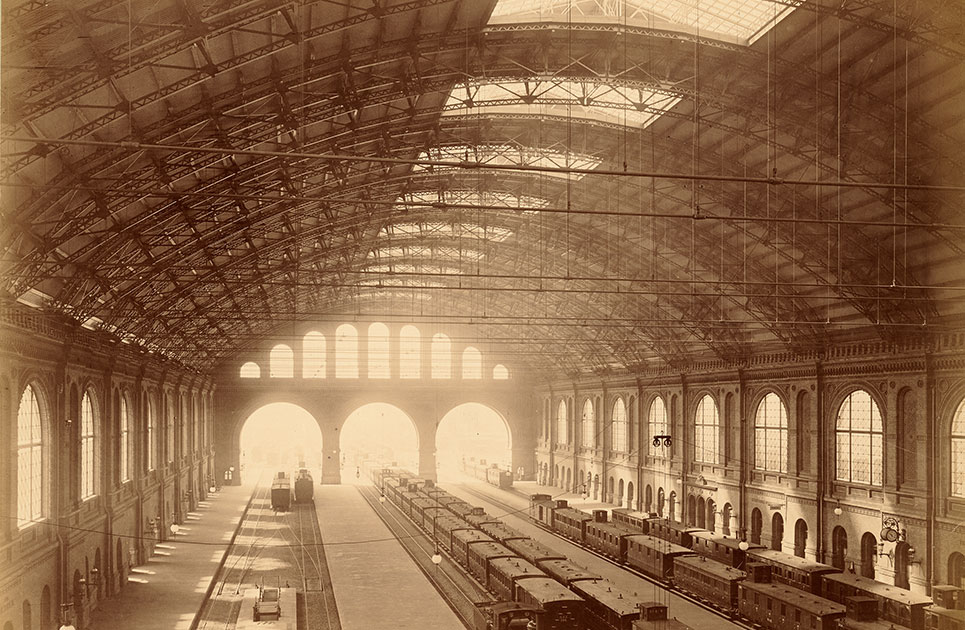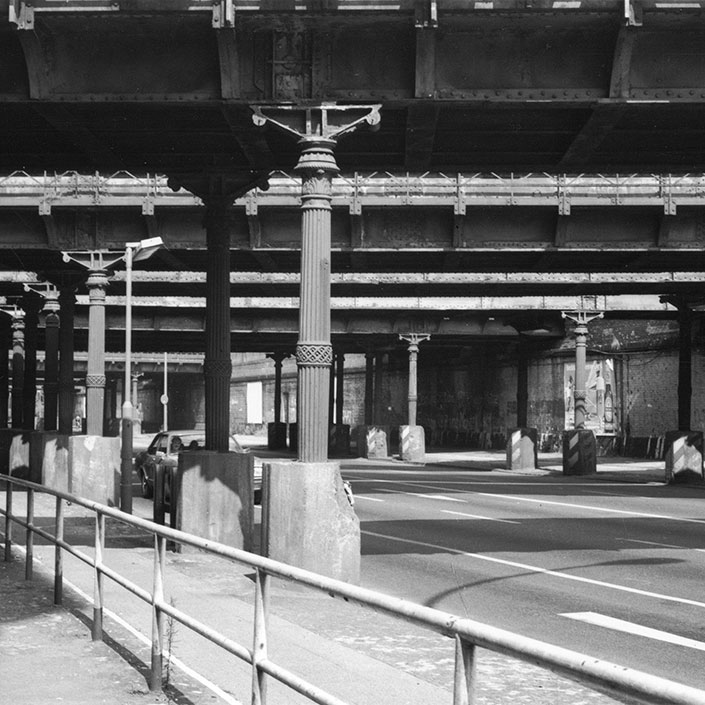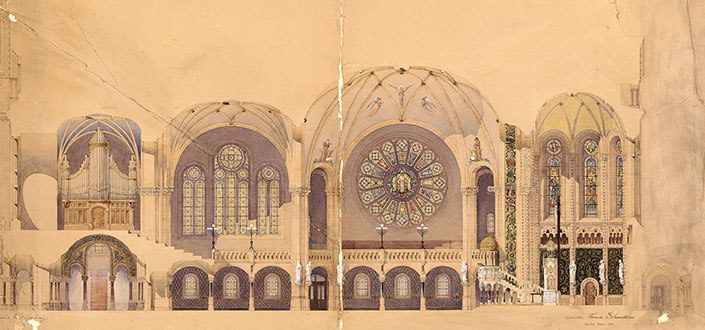

The bridge
architects
The designers of the 19thcentury Yorckbrücken naturally played a key role in defining their impressive appearance.
The architect Franz Schwechten (1841–1924) studied at the Berlin Bauakademie (Building Academy) and worked for the civil engineering department of the Berlin-Anhaltische Eisenbahn-Gesellschaft from 1871 to 1882. During that period, he designed the new Anhalter Bahnhof, which greatly enhanced his reputation and led to numerous further commissions for industrial and church buildings. His most famous design is the Neo-Romanesque Kaiser Wilhelm Memorial Church in Berlin.
The engineer Heinrich Seidel (1842–1906) studied engineering and worked in the construction offices of the Berlin-Potsdamer and Berlin-Anhaltische railway companies. He built railway facilities for the Yorckbrücken and the hall structure of the Anhalter Bahnhof, which, with a span of 62.5 metres, was regarded as an outstanding example of European engineering. From 1880 onwards, he dedicated himself completely to his second profession, namely as a writer.
The architect Hugo Hartung (1855–1932) studied civil engineering and architecture in Berlin and became a professor at the Technische Hochschule Dresden in 1900. He later also taught at the Technische Hochschule Charlottenburg. To this day, he is famous for the Hartung columns named after him. The cast-iron hinged columns were first used for the construction of Berlin’s commuter railway (Stadtbahn). Over 100 years later, they still characterise the style of Berlin’s railway architecture.

Der Entwurf zum Empfangsgebäude des Anhalter Bahnhofs stammt von Franz Schwechten.

Die Hartungsche Säule kam vielfach beim Berliner Eisenbahnbau zum Einsatz, auch an den Yorckbrücken.

Auch der Entwurf für die Berliner Gedächtniskirche stammt von Franz Schwechten.


1 The Anhalter Bahnhof‘s main building was designed by Franz Schwechten.
Architekturmuseum TU Berlin, Inv. Nr. BZ-F 08, 019
2 The Hartung column was used in many Berlin railway construction projects, including the Yorckbrücken.
Archiv der Deutschen Bahn
3 Franz Schwechten also designed the Gedächtniskirche in Berlin.
Architekturmuseum TU Berlin, Inv. Nr. 15892



1 The Anhalter Bahnhof‘s main building was designed by Franz Schwechten.
Architekturmuseum TU Berlin, Inv. Nr. BZ-F 08, 019
2 The Hartung column was used in many Berlin railway construction projects, including the Yorckbrücken.
Archiv der Deutschen Bahn
3 Franz Schwechten also designed the Gedächtniskirche in Berlin.
Architekturmuseum TU Berlin, Inv. Nr. 15892



